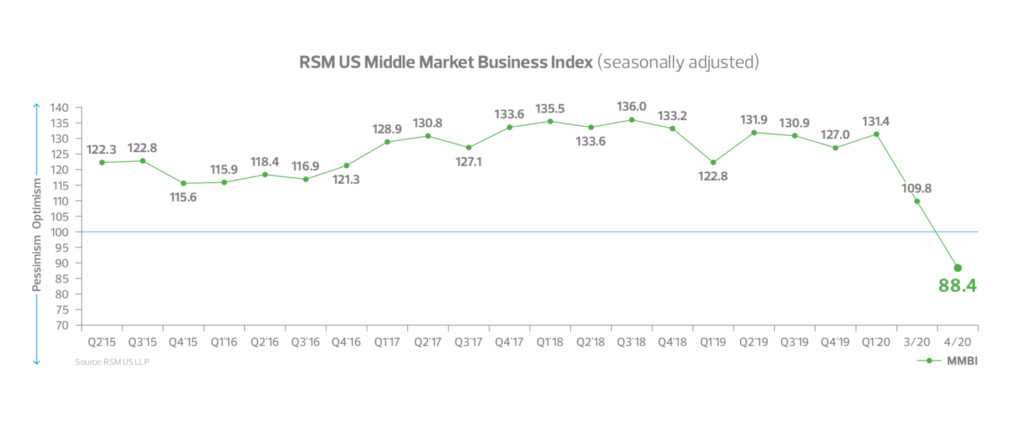
An In-Depth Guide to Selling a Manufacturing Business (+ Info on Navigating New Tariffs)
In-depth guide to selling your manufacturing business—from valuation and exit prep to negotiation. Plus, how new tariffs may impact your company’s valuation.
That the middle market is struggling amid the ongoing coronavirus pandemic will come as a surprise to no one. RSM US’s Q2 2020 Middle Market Business Index (MMBI) reported middle market business conditions declined from 109.8 in March 2020 to an all-time low of 88.4 in April 2020. The MMBI is based on a standard set of questions posed to middle market executives around topics such as revenues, profits, capital expenditures, hiring, compensation, inventories, and more. A reading above 100 indicates the middle market is generally expanding, while one below 100 suggests it is generally contracting, with the distance indicative of the level of the growth or decline.
The report also found that lower middle market companies in particular — defined here as those with between $10 and $50 million in annual revenue — have been disproportionately affected by the crisis.

Some of the specific indicators from the Q2 2020 report include:
“Smaller midsize companies [are] bearing the brunt of the pressure” during the crisis, according to the report. More lower middle market companies sought lending relief when the pandemic hit: 50 percent of executives at smaller companies (defined as those with annual sales of $10 to $50 million) report seeking financing vs. 34 percent of larger middle market companies ($50 million to $1 billion). Forty-three percent of the smaller companies plan to seek financing in the second half of 2020 vs. 28 percent of larger companies. Issues accessing the SBA’s Paycheck Protection Program only exacerbated these companies’ concerns.
Smaller businesses may have also had more trouble transitioning their operations to remote work, the report speculates. Remote work was not uncommon for middle market businesses prior to the crisis — more than two-thirds of executives polled said they had at least some employees working off-site prior to Covid-19. Post-shutdowns, this number skyrocketed to 90 percent. However, there were fewer remote employees at smaller middle market businesses. Executives at these companies reported 83 percent of workers off-site vs. 96 percent at larger companies, indicating that perhaps larger companies were better able to transition to this new virtual reality, whether because of previous investments in technology or other business-specific factors.
For companies of all sizes, ”the major takeaway from the data shows that a majority of executives surveyed indicated that these [economic] shocks are large and pervasive. They do not anticipate significant improvement in the economy, earnings, or revenues over the next six months,” notes the report.
